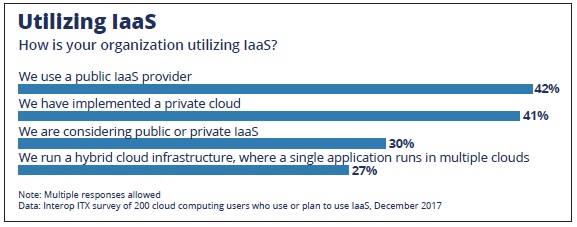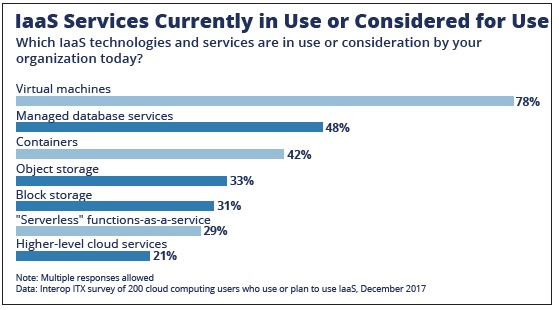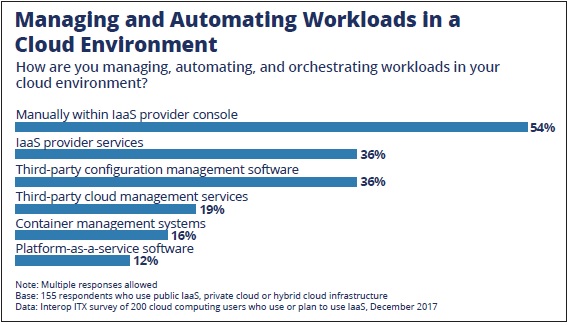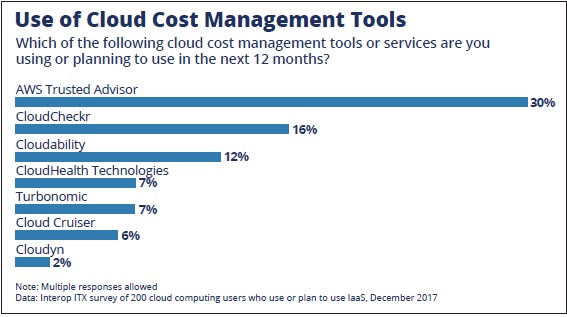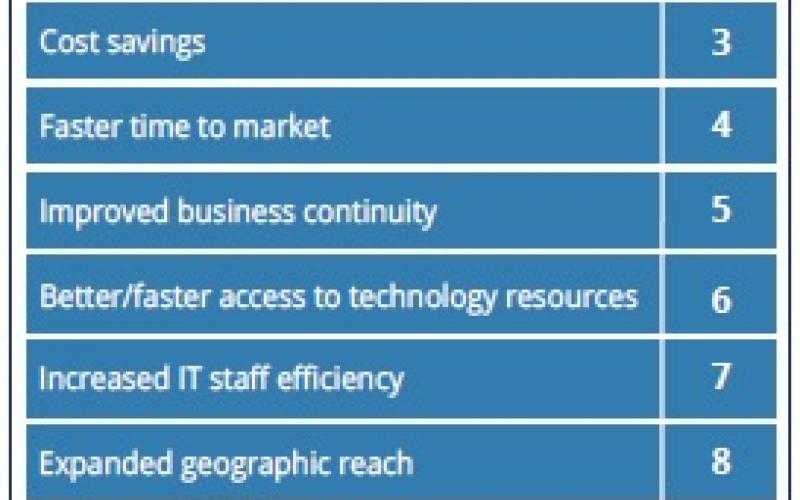It's been 12 years since Amazon Web Services launched its Elastic Compute Cloud Service (EC2). Since then, the tremendously popular service has attracted a number of competitors and enterprises have been eager to reap the benefits of cloud adoption. As companies either leap or make tentative steps to the cloud, we've seen the emergence of private and hybrid clouds alongside public IaaS services like EC2.
The market for cloud infrastructure is growing at a rapid clip. Research analysts at IDC expect sales of off-premises cloud IT infrastructure will reach $55.7 billion in 2022, with public cloud data centers accounting for nearly 84% of that. Overall spending on cloud IT infrastructure, including on-premises private cloud, will surpass spending on non-cloud IT infrastructure in four years, according to IDC.
The Interop ITX and InformationWeek 2018 State of Cloud Computing Survey found that organizations are taking a wide range of approaches to IaaS cloud adoption. The study, which polled 200 IT decision makers in North America, found that many are sticking with architectures based on tried-and-true virtual machine technology, but some are using newer technologies such as containers and serverless architecture.
The study also found that private cloud is losing ground to public cloud: 43% of workloads are running in the public cloud, up from 24% in a similar survey from 2014.
Dan Conde, an IT analyst and Interop ITX Review Board member, said he sees companies eventually making a complete shift to public cloud IaaS. Right now, there's still some confusion about what the public cloud is, he said. For example, some may think they've moved to the cloud when they run a virtual machine outside of the enterprise, such as in a co-location facility.
But that still involves provisioning and managing infrastructure, including applying patches, Conde said. Newer public cloud services such as AWS Lambda let users run code without needing to deploy servers.
"If you really buy into the cloud, if you buy into rewriting your apps and utilizing advanced services in the cloud like databases, then you don't have to worry about a server or a cluster," Conde said. "That's the true benefit of the cloud. It will take a while to get there."
In the meantime, businesses are learning how to manage their cloud infrastructure, including the costs of keeping workloads in the public cloud, according to the Interop ITX report. Many also are learning about containers. At the same time, quite a few still harbor doubts about the security of IaaS. On the next few pages, we delve into some of the top findings from this year's cloud survey.
(Image: jijomathaidesigners/Shutterstock)







